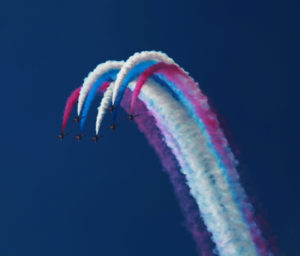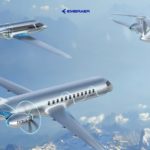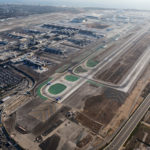*Concorde at Farnborough Airshow 1978 Credit: Serendigity, CC BY-SA 2.0 <https://creativecommons.org/licenses/by-sa/2.0>, via Wikimedia Commons
As the UK prepares to celebrate the Queen’s Platinum Jubilee, marking seven decades of service, FINN looks back at 74 years of the Airshow being held at Farnborough.
With origins in exhibitions by the Royal Air Force and Society of British Aircraft Companies, the Airshow takes place every two years – and has become one of the world’s foremost aviation events.
It has welcomed royal visitors, including Prince Philip, the Queen’s late husband, who attended the Airshow in 1952 and 1976.
First powered flight
Farnborough Airport lays claim to several milestones in British aviation history, including the country’s first powered flight which took place at the airfield in 1908.
The airfield was also the home of the Royal Aircraft Factory which was later renamed the Royal Aircraft Establishment to avoid a clash with the formation of the Royal Air Force in 1918.
At the RAE, research into all aspects of air and space vehicle design, construction, test and operation was undertaken for 100 years – the first century of powered flight.
From Samuel Cody’s first flight in 1908, through two World Wars and from Whittle’s jet engine to Concorde, the RAE was intimately involved and the nearby Farnborough Air Sciences Trust Museum showcases many of these achievements.

Society of British Aircraft Constructors
The Airshow itself can be traced back to a flying and static display organised by the Society of British Aircraft Constructors at Hendon Aerodrome in June 1932.
In 1936, the show was moved to the de Havilland airfield at Hatfield, before switching in 1946 to the Handley Page works at Radlett. Finally in 1948, it moved to Farnborough where it has been held ever since – 74 years and counting.
The first Farnborough Airshow, held in the September of that year, saw an eclectic mix of airframes, including the Armstrong Whitworth A.W.52, an early flying-wing aircraft.
During the 1950s, the Airshow welcomed the Avro Vulcan delta bomber and the Saunders-Roe Princess double-decker flying boat. In 1952, a de Havilland 110 tragically crashed, killing 29 spectators and its two crew.
In the 1960s, the Hawker P.1127, the precursor to the Harrier jump jet, made its debut at the show, while the era of supersonic air travel followed in the 1970s with Concorde making an appearance at Farnborough.

Passenger jets
The 1980s was dominated by early incarnations of the passenger jets that are still around today, with demonstrations of the Boeing 767 and the Airbus A310.
The Eurofighter made its Farnborough debut in 1996, while the super-jumbo Airbus A380 made its presence known at Farnborough around a decade later, in 2008.
Dreamliners and F-35s
The 2010s saw the latest advances in commercial and military aviation showcased, with Boeing 787 Dreamliners (in 2012 and 2018) and the Lockheed Martin F-35 Lightning II (2016) taking part.
After a Covid-induced pause at the beginning of this decade, the Airshow returns between 18-22 July 2022 with its own exciting schedule.

